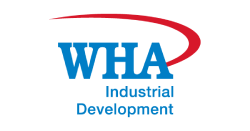Articles
CEO Talk
30/04/2012Early in 2012, the Thai economy has recovered quickly from the unfortunate events in Japan and more recent 2011 flood disruptions in Thailand. While having no direct impact to Hemaraj industrial estates, we regret any loss incurred from the people property or supply disruption in Thailand.
Despite this, 2011 was a record year for Hemaraj as we sold or rented (if with buildings) 1,670 rai or 267 hectares. This comprised 74 new contracts with 49 being new customers and 25 expansions from our existing customer base. We also increased factories under rental by 52,000 square meters or 49% from our base rental level.
We just completed our first two warehouses in Hemaraj Logistics Park 1 @New Highway 331. HLP1 with 125,000 square meters at maturity is half way between our Hemaraj Eastern Seaboard Industrial Estates and Laem Chabang port on New Highway 331 at Bowin, Chonburi. Our second project this year, Hemaraj Logistics Park 2 at our Hemaraj Eastern Seaboard Industrial Estate comprises 200,000 square meters at maturity of quality logistics warehouse space with both the
Free Zone and General Zone initial warehouses being available at the end of 2012. If you need more information, please call or email Anchalee Prasertchand, Director of Industrial Customer Development at anchaleep@hemaraj.com.
Investment is at a very high level as Thailand continues to be attractive in expanding the manufacturing base in a number of industries due to cost, currency and access to markets. Certainly automotive has seen a receptive local market for vehicles with slightly lower taxes to encourage domestic consumption. The export base and supplier capability is firmly established and the multitude of models and OEM programs bode well for Thailand to be the Asia Pacific export base for globally competitive leading edge automotive products. However, the technology choices and various countering subsidized fuel costs are at best confusing and not conducive to a long range automotive strategy. We have always advocated encouraging the OEM’s to be able sell locally through reasonable duties their best energy and emission technology, thus enhancing the export capabilities and competitiveness of Thailand.
With a heightened level of investment, labor resources are tighter as the technical supply from vocational schools and skill training centers are not keeping pace with the industrial demand. The recent increase in the minimum labor rates to Baht 300 a day has a lot of good merits. While acknowledging the transition could be smoother for small companies and remote provinces, the benefits outweigh the negatives. Labor working in organized industry is still low in Thailand with 30% of labor working in agriculture where 10% of GDP is produced or being underemployed.
With the promise of higher incomes and opportunities for higher skill jobs, the labor base shouldstart to expand. The attractiveness of Thailand with the AEC 2015 liberalization, if it progresses smoothly, could also assist in increased human resources.
Another constraint has been the road congestion approaching Laem Chabang port with latent planning of bridges, interchanges, and highway widening and enhancements or a viable rail transportation network. While there are plans for Greater Mekong and other regional routes, my ambitions are more modest to reach local people port and supplier networks. The fuel subsidies and populist spending of recent governments has taken financial resources and attention from
infrastructure and logistics competitive improvements. However there are encouraging recent actions in a few highways close to home being upgraded, highway 3138 in 2013, widening of highway 3143, and route interchange design for Laem Chabang port and subsequent construction starting from later this year.
Lower corporate income taxes from 2012 as well as a heightened focus on infrastructure are areas that are encouraging in order to increase the competitiveness of Thailand.
David Nardone
President and CEO
Hemaraj Land And Development Public Company Limited

